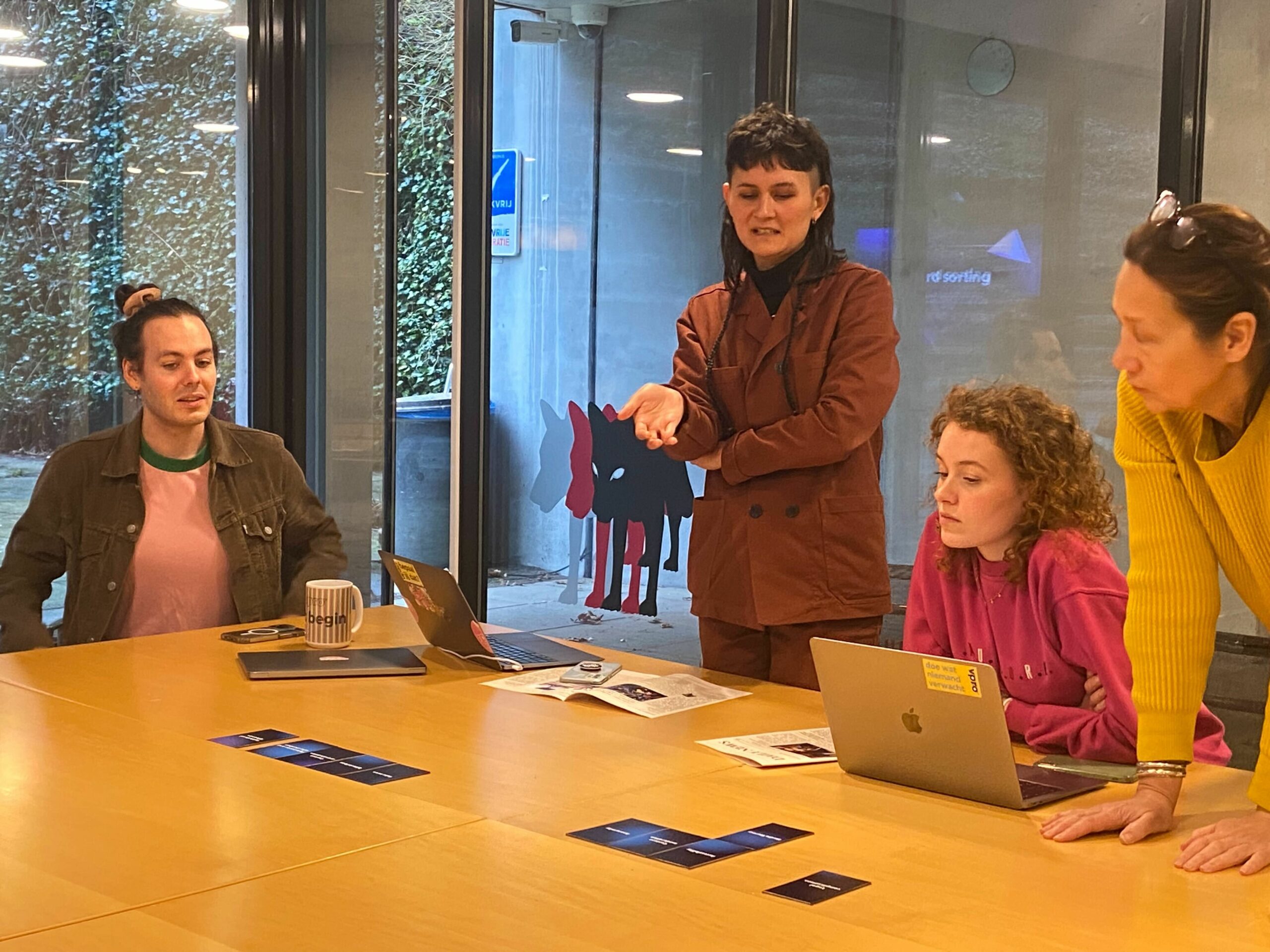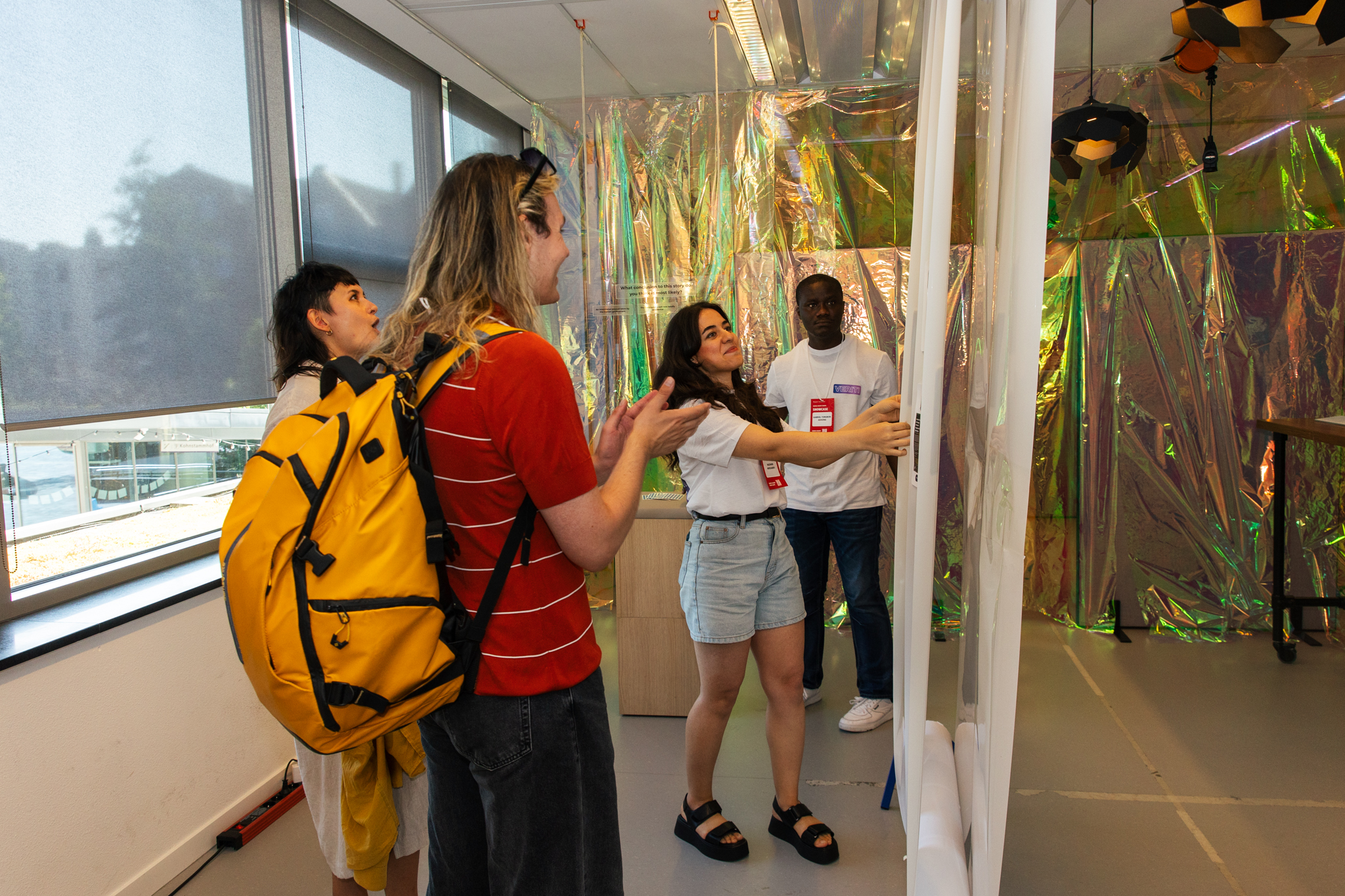
Project Overview
VERITI is a platform designed to enhance global collaboration in journalism by connecting citizen journalists, Open Source Intelligence (OSINT) researchers, and established media professionals. The goal of this project was to create a secure, user-friendly platform that facilitates the co-creation of authentic news, especially in regions with limited personal and press freedoms. This case study outlines the UX design process behind VERITI, focusing on research, design sprints, user feedback, and iterative development.
Timeline
Five Months
My Role
UX Researcher | UX/UI designer |Scrum Master | Project coordinator
Collaboration
VPRO, DSS
Toolkit
Figma
Adobe Creative Suite
Laser Printer
Problem:
In an era of increasing censorship and misinformation, journalists, citizen journalists, and researchers lack secure platforms for collaborative news creation. This leads to gaps in reliable global news coverage and puts journalists in restricted regions at risk.
- Global context of press freedom challenges
- Current platform limitations
- Security risks for journalists
- Collaboration barriers
Objectives:
- Enable secure global collaboration
- Ensure source verification
- Protect user anonymity
- Foster transparent journalism
Conversational Object
A design artifact that aids in understanding the problem, contributing to research, and sparking questions and discussions during meetings with partners.
Research & Insights
Key Findings:
- 3 main User Personas
- 27 Survey responses
- 15 In-depth interviews
- 7 Competitor analyses
Key insights revealed the need for:
- Transparency: A clear, trustworthy process to verify news sources.
- Collaboration: Tools that enable seamless communication between contributors.
- Safety: A secure platform that protects user anonymity, especially in regions with censorship.
Research Goal:
- Security for those in restricted regions
- Credibility for professional journalists
- Accessibility for citizen reporters
Design Process
KEY DESIGN DECISIONS
- Collaborative Workshops: Engaging games and activities facilitated stakeholder collaboration and feedback, ensuring alignment on design priorities.
- Competitor Audit: A SWOT analysis of similar platforms identified opportunities to enhance collaboration, build community, and integrate advanced verification technologies.
- Journey Mapping: Visualized user flows and identified potential pain points, like reporting a terrorist attack, to optimize the platform’s usability.
- Persona Development: Three core personas were defined, representing the diverse user base of VERITI.

Collaborative Workshop: Engaging Stakeholders Through Gamification
During each sprint review with our partners at VPRO, we prepared an engaging game alongside our presentation and research findings. This interactive approach aimed to enhance our understanding of the design priorities and challenges facing the platform. The game encouraged participants to voice potential questions and insights, fostering a collaborative environment to identify key design considerations and address any challenges that may arise in developing the platform.


Competitor Audit


Findings:
SWOT Analysis of Similar Platforms
Strengths
- High demand for collaborative, secure platforms for journalists and citizen journalists.
- Potential to empower information sharing and verification, especially in restricted environments.
Weaknesses
- Usability issues and complex interfaces hinder user adoption.
- Limited features for co-creation and collaboration.
- Lack of transparency erodes trust.
Opportunities
- Enhance collaboration tools and workflows.
- Build strong communities and foster knowledge sharing.
- Integrate advanced verification technologies.
- Gamify platform to increase engagement and incentivize participation.
Threats
- Misuse of anonymity features and spread of misinformation.
- Difficulty in maintaining user engagement and providing incentives.
- Competition from existing platforms.
- Government censorship in regions with limited press freedom.
Journey Map
Scenario: You witness a terrorist attack and remember VERITI, a platform where you can securely share and broadcast real-time information about such incidents. What steps would you take to report and contribute to the unfolding situation?




Persona
After doing interviews with different potential users on a platform we came to the conculution that our personas categorized in three main categories.
Knowle




Key Features & Design Decisions
- Forums & Newsrooms: VERITI offers both open forums for community discussions and private newsrooms for secure, focused collaboration.
Forums: “Public spaces needed to balance accessibility with security.”
- Open access design
- Browse-before-signup feature
- Community moderation tools
Newsrooms: “Private collaboration spaces where security meets usability.”
- Access control mechanisms
- Media literacy scoring
- Anonymous collaboration tools
- Source verification features
- Usability Testing: Multiple rounds of testing, including surveys, in-person sessions, and online evaluations, validated the platform’s design and led to iterative improvements.
- Design Changes: Based on user feedback, we enhanced user profiles, clarified the newsroom concept, and improved platform accessibility.
- Anonymity & Security: Pseudonymous profiles and robust security measures protect user identities, especially in high-risk regions.


Design Changes
Based on in-person user testing and feedback, we made key revisions to the prototype, focusing on:
-
- Enhancing user profiles with additional details, including user rankings, and implementing upvoting and downvoting features.
- Introducing a clear explanation of the NewsRoom on the homepage to help new users understand how different spaces function.
- Allowing users to browse the forum before requiring them to sign up, aiming to increase curiosity and engagement with the platform.
- Providing the option to use pseudonymous profiles to protect user identities in case their real information is unintentionally disclosed by themselves or others.
USABILITY TESTING & ITERATIONS
Each testing round revealed new insights about how journalists would use the platform in real-world scenarios.
-
Testing Approach:
- Multiple testing rounds
- Scenario-based testing
- Security feature validation
- User journey validation

Homepage clarity improvements

Pseudonymous profiles option

Enhanced user profiles
Final Exhibition | Bringing VERITI to Life
The final exhibition showcased VERITI through an interactive “Newsroom” installation, a clickable Figma prototype, and a visualization of user news habits. This hands-on experience generated valuable feedback and validated the platform’s potential.






Key Takeaways
- This project highlighted the importance of user-centered design in developing solutions for complex social challenges.
- The collaboration with VPRO and other stakeholders underscored the value of teamwork in bringing innovative ideas to life.
- The positive reception of the project at the exhibition validated the potential of VERITI to make a real-world impact.
To make a platform truly global, there is a need for an ambassador program
Next Steps
- Further development and testing of the website.
- Implementation of additional security measures to protect users in high-risk environments.
- Launch of the platform and ongoing evaluation of its impact.
- furthur developing ambassador program
What I Learned
This project emphasized the importance of understanding diverse user needs, particularly when designing for trust, security, and global accessibility.
